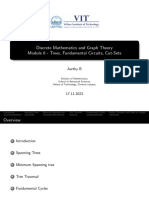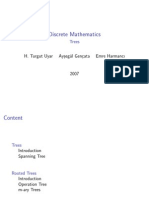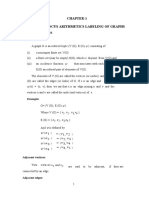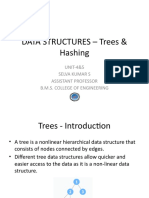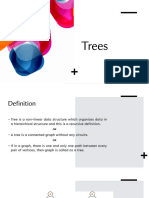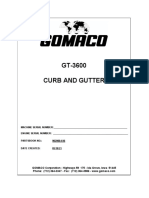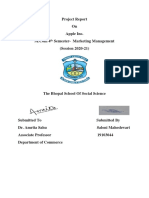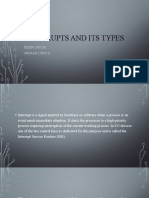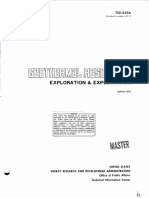0% found this document useful (0 votes)
29 views54 pagesModule 6
The document covers the concepts of trees in graph theory, including properties, definitions, and algorithms related to spanning trees and minimum spanning trees. It discusses tree traversal methods such as preorder, inorder, and postorder, and explains fundamental circuits and cut-sets. Additionally, it provides examples and definitions related to eccentricity, radius, and centers of trees.
Uploaded by
akshatspammailCopyright
© © All Rights Reserved
We take content rights seriously. If you suspect this is your content, claim it here.
Available Formats
Download as PDF, TXT or read online on Scribd
0% found this document useful (0 votes)
29 views54 pagesModule 6
The document covers the concepts of trees in graph theory, including properties, definitions, and algorithms related to spanning trees and minimum spanning trees. It discusses tree traversal methods such as preorder, inorder, and postorder, and explains fundamental circuits and cut-sets. Additionally, it provides examples and definitions related to eccentricity, radius, and centers of trees.
Uploaded by
akshatspammailCopyright
© © All Rights Reserved
We take content rights seriously. If you suspect this is your content, claim it here.
Available Formats
Download as PDF, TXT or read online on Scribd
/ 54





